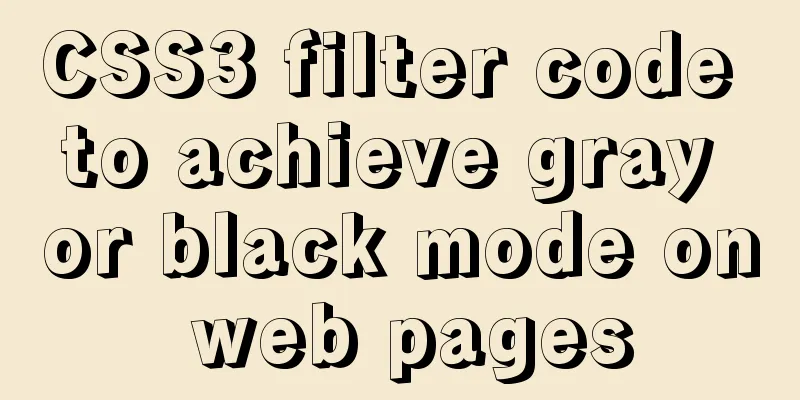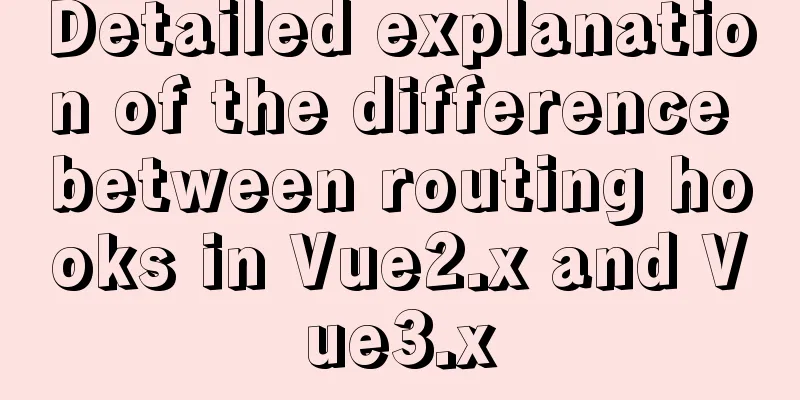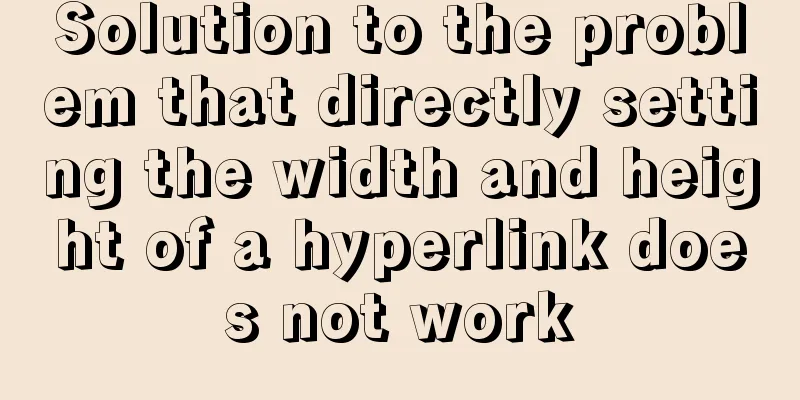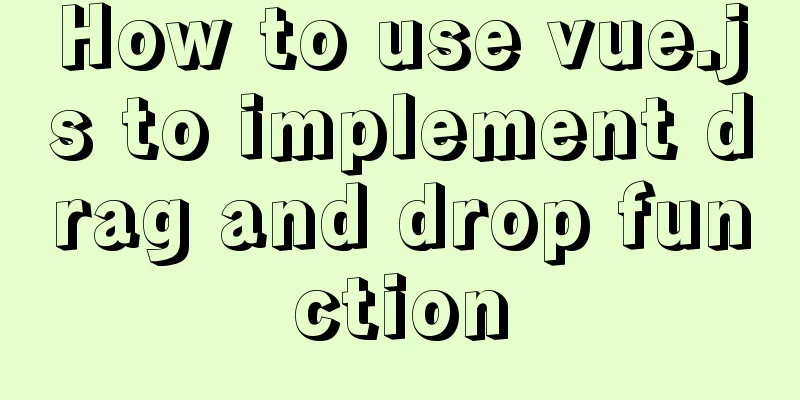CSS3 filter code to achieve gray or black mode on web pages

|
front end css3,filter can not only achieve the gray effect of web pages, but also assist in achieving the night mode effect. Let’s see how to implement it! Introduction to filter properties filter: none | blur() | brightness() | contrast() | drop-shadow() | grayscale() | hue-rotate() | invert() | opacity() | saturate() | sepia() | url(); Tip: Use spaces to separate multiple filters. Website gray effect This effects blog was first created when I was summarizing the commonly used CSS effects. It can be easily achieved with the following code! The code is as follows:
html {
filter: grayscale(100%); //IE browser-webkit-filter: grayscale(100%); //Google browser-moz-filter: grayscale(100%); //Firefox-ms-filter: grayscale(100%);
-o-filter: grayscale(100%);
filter:progid:DXImageTransform.Microsoft.BasicImage(grayscale=1);
-webkit-filter: grayscale(1); // Google Chrome}Compared with the gray effect, the night mode is a little more difficult to achieve! Night mode judgment If it is pure web, you can use the prefers-color-scheme query statement in modern browsers. The syntax is as follows: no-preference The system does not inform the user of the color scheme to use. For example:
/* Dark mode */
@media (prefers-color-scheme: dark) {
body { background: #333; color: white; }
}
/* Light mode */
@media (prefers-color-scheme: light) {
body { background: white; color: #333; }
}If you need to determine the system's dark or light theme in JavaScript code, you can use the native window.matchMedia() method, for example:
// Whether to support dark mode // Return true or false
window.matchMedia("(prefers-color-scheme: dark)").matches;Night Mode Code
html {
filter: invert(1) hue-rotate(.5turn);
}After that, the picture will be reversed, which is very ugly.
img {
filter: invert(1) hue-rotate(.5turn);
}Add another layer to the picture, and it will be right side up, so the pure picture will be fine Therefore, the combination can be set up like this:
html, img {
filter: invert(1) hue-rotate(.5turn);
}
img {
opacity: .75;
}But there is a problem with the background image and the black shadow. For the background image, you can set it as follows:
@media (prefers-color-scheme: dark) {
html, img {
filter: invert(1) hue-rotate(180deg);
}
.bgfilter{
filter: invert(1) hue-rotate(180deg);
}
.some-ele-box {
box-shadow: none;
}
}question The above settings are only for light backgrounds, and will not work for no background or transparent backgrounds. In addition, special processing is required for each style. For example, you can use the filter as a global variable to perfectly match the night mode. For example:
@media (prefers-color-scheme: dark) {
html {
filter:invert(1) hue-rotate(180deg)
}
.dark-img,img {
filter: invert(1) hue-rotate(180deg)
}
// Special processing for background images // Special processing for global colors // background-color: var(--darkColor)
}This is the end of this article about how to use CSS3 filter to achieve gray or black mode on web pages. For more information about how to use CSS3 filter to achieve gray or black mode on web pages, please search previous articles on 123WORDPRESS.COM or continue to browse the related articles below. I hope you will support 123WORDPRESS.COM in the future! |
<<: Summary of relevant knowledge points on how adaptive web design is achieved
>>: A brief discussion on HTML doctype and encoding
Recommend
Analysis of the situation where js determines and informs the support of CSS attributes (values)
When we want to use a new CSS feature, we always ...
Angular Dependency Injection Explained
Table of contents Overview 1. Dependency Injectio...
Solve the problem of the container showing Exited (0) after docker run
I made a Dockerfile for openresty on centos7 and ...
vue-router hook function implements routing guard
Table of contents Overview Global hook function R...
How to use Webstorm and Chrome to debug Vue projects
Table of contents Preface 1. Create a new Vue pro...
Vue implements irregular screenshots
Table of contents Image capture through svg CSS p...
A brief analysis of HTML space code
How much do you know about HTML? If you are learni...
Vue codemirror realizes the effect of online code compiler
Preface If we want to achieve the effect of onlin...
Detailed explanation of the solution to the nginx panic problem
Regarding the nginx panic problem, we first need ...
A brief discussion on several ways to implement front-end JS sandbox
Table of contents Preface iframe implements sandb...
JavaScript implementation of the Game of Life
Table of contents Concept Introduction Logical ru...
Implementation of element shuttle frame performance optimization
Table of contents background Solution New Questio...
Tomcat reports an error when starting the springboot project war package: Error when starting the child
Today, the company's springboot project is re...
MySQL storage engine basics
In the previous article, we talked about MySQL tr...
The latest collection of 18 green style web design works
Toy Story 3 Online Marketing Website Zen Mobile I...









